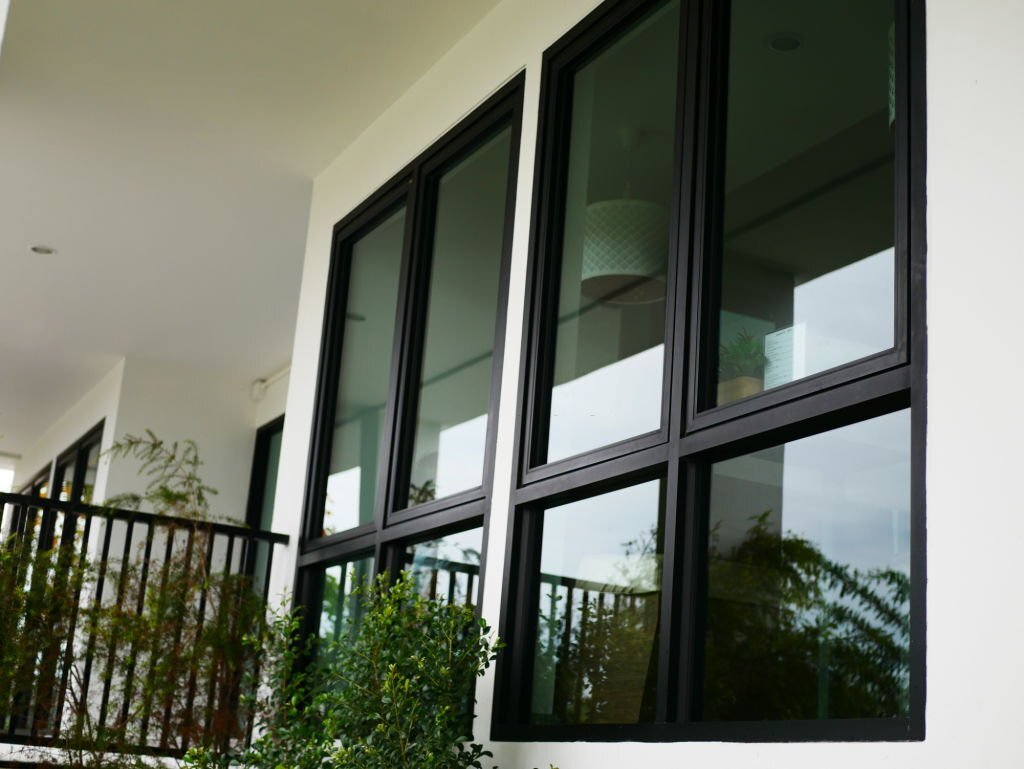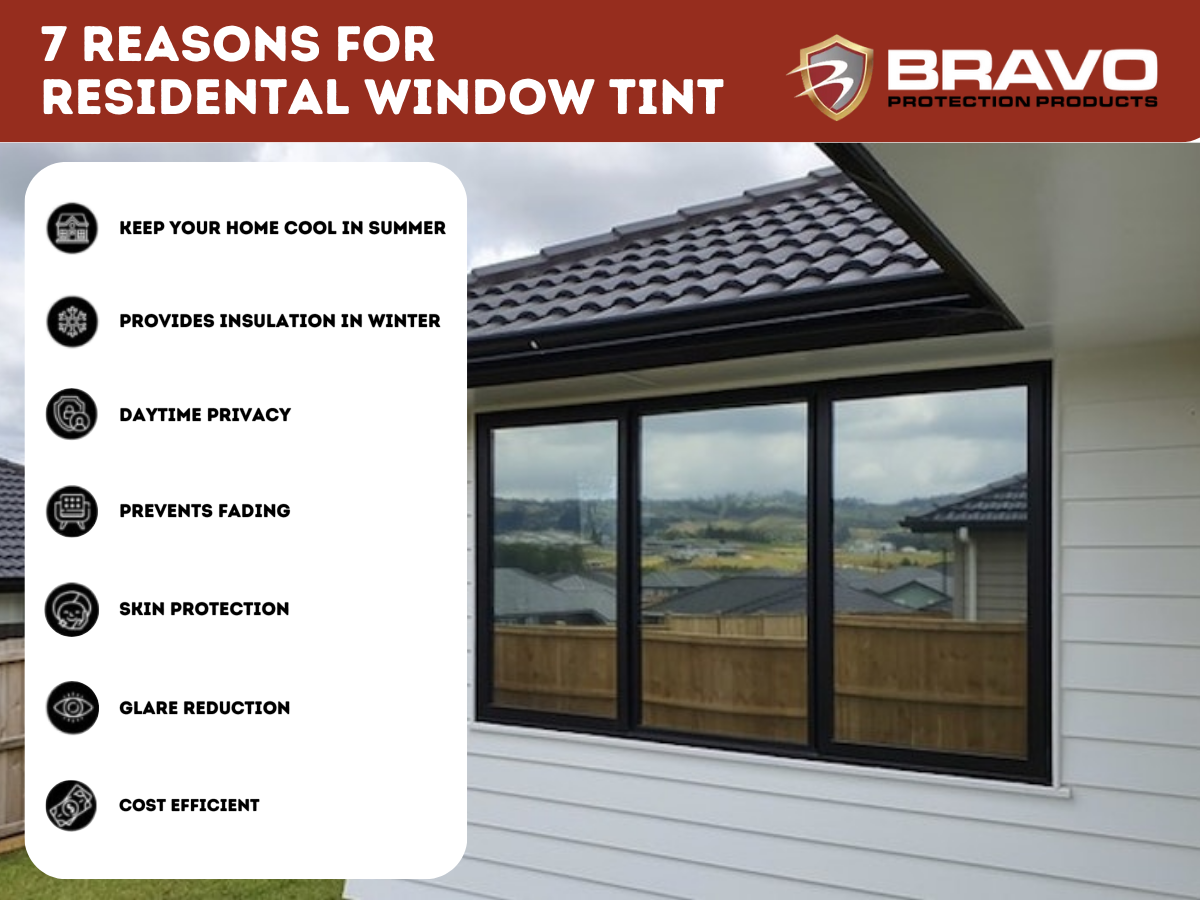Just How Residential Window Tint Enhances Your Home's Aesthetic Appeal
Just How Residential Window Tint Enhances Your Home's Aesthetic Appeal
Blog Article
Exactly How Residential Window Tinting Improves Your Home's Energy Performance
Residential window tinting presents an engaging option for home owners looking for to improve energy efficiency within their living areas. By using specialized films to windows, it effectively reduces heat transfer, thus supporting indoor temperature levels and reducing the demand for extreme home heating or cooling.
Understanding Window Tinting
Comprehending home window tinting is important for house owners looking for to boost both convenience and energy performance in their living rooms. Residential Window Tint. Home window tinting entails the application of a slim movie to the interior or exterior surface of glass windows. This film can significantly modulate the amount of sunlight and warm that goes into a home, therefore influencing indoor climate conditions
There are different kinds of window tinting movies available, each with distinct buildings. For example, colored movies absorb solar energy, while reflective movies disperse it away from the glass surface. Ceramic movies use a balance of visibility and heat denial, making them a popular choice amongst house owners. The efficiency of window tinting is often determined by its Visible Light Transmission (VLT) portion, which indicates just how much light can travel through the film.
Advantages of Energy Effectiveness
Window tinting not just improves aesthetic appeals but additionally plays a substantial function in improving power efficiency within property spaces. By reducing warmth transfer through home windows, tinted movies create a more steady interior climate, which can result in substantial reductions in power intake for home heating and air conditioning. This power efficiency converts into lower energy bills, providing property owners with significant long-term cost savings.

In addition, home window tinting enhances the comfort of living spaces. By minimizing glow and blocking hazardous UV rays, colored windows produce an even more pleasant setting, which can cause improved health for passengers. The protection versus UV rays likewise helps preserve furnishings and flooring from fading, adding to the durability of home things.
How Tinting Functions
Tinting films run through a mix of sophisticated products and innovations designed to manage the amount of solar power entering a home. Primarily made up of polyester, these films usually integrate ceramic or metallic particles that mirror and absorb warm. This twin capacity allows them to dramatically decrease the infiltration of ultraviolet (UV) rays and infrared radiation while allowing visible light to go through.
The performance of window tinting is measured by its solar warm gain coefficient (SHGC), which indicates just how much solar power is transmitted with the home window. Reduced SHGC worths are more suitable as they signify better heat being rejected. In addition, window tints can include a selection of shades, allowing house owners to customize link their aesthetic choices while boosting power efficiency.
Moreover, these films work as a barrier, stopping warmth loss throughout colder months by reflecting interior warmth back right into the home. This thermal insulation impact enhances the air conditioning benefits acquired during warmer months, adding to a well balanced interior environment year-round. By managing solar energy efficiently, property home window tinting not just boosts convenience yet additionally plays a vital role in decreasing energy usage and reducing utility bills.
Picking the Right Tint

There are different kinds of home window movies offered, consisting of dyed, metalized, and ceramic. Dyed movies are cost-efficient but might have limited resilience. Metalized films offer much better heat rejection however can conflict with electronic signals. Ceramic films supply excellent warm control without endangering visibility and are very resilient, making them a prominent selection.
Visible light transmission (VLT) is an additional essential aspect, as it suggests the quantity of all-natural light that can travel through the tinted glass. Property owners must choose a color with a VLT that matches their illumination choices while still giving ample glow decrease.
In addition, examining the solar warmth gain coefficient (SHGC) can aid establish just how well a color can obstruct warm from sunlight. A lower SHGC indicates better heat control, ultimately enhancing power performance.
Installation and Upkeep Tips
Appropriate setup and maintenance are essential elements in optimizing the benefits of residential home window tinting. To accomplish optimal outcomes, it is a good idea to hire a certified expert for installation. This makes certain that the tint is applied properly, avoiding air bubbles, creases, or misalignment this website that can jeopardize performance. Experts also make use of specialized methods and devices, which can enhance the durability and efficiency of the tint.
Following setup, upkeep is important to lengthen the life of the window film. It is advised to wait at least thirty day before cleaning up the colored home windows to allow the glue to heal fully. When cleansing, make use of a soft cloth and a gentle, ammonia-free cleaner to prevent harming the movie. Avoid rough products that could scratch the surface area.
Furthermore, routine assessments are beneficial. Look for any peeling or bubbling, which might suggest inappropriate installment or put on with time - Residential Window Tint. Addressing these issues promptly can prevent further damage and maintain power performance. By sticking to these installment and upkeep ideas, house owners can guarantee their window tinting continues to offer significant energy financial savings and convenience for many years to find.
Conclusion
In verdict, property window tinting acts as an efficient service for enhancing power efficiency within homes. By lowering warm transfer and blocking unsafe UV rays, home window films add to lower power usage and improved interior comfort. The choice of appropriate tinting products, along with correct setup and upkeep, even more takes full advantage of these benefits. Eventually, home window tinting represents a lasting investment that not just lowers energy bills however additionally promotes a comfy living environment throughout the year.
Window tinting includes the application of a slim movie to the interior or exterior surface of glass home windows. By reducing heat transfer with home windows, colored films create a much more secure interior climate, which can lead to significant reductions in power intake for home heating and air conditioning.The effectiveness of window tinting is determined by its solar warmth gain coefficient (SHGC), which shows just how much solar energy is transmitted through the window. By handling solar helpful hints energy successfully, household home window tinting not only enhances comfort but also plays an important role in lowering power intake and lowering energy costs.
By reducing heat transfer and obstructing harmful UV rays, window films add to decrease power intake and boosted interior convenience.
Report this page